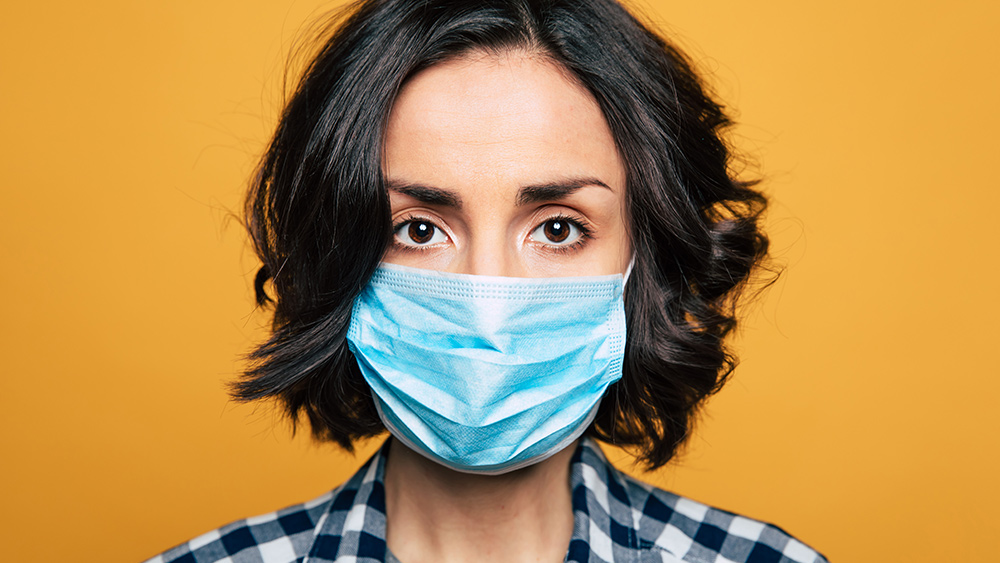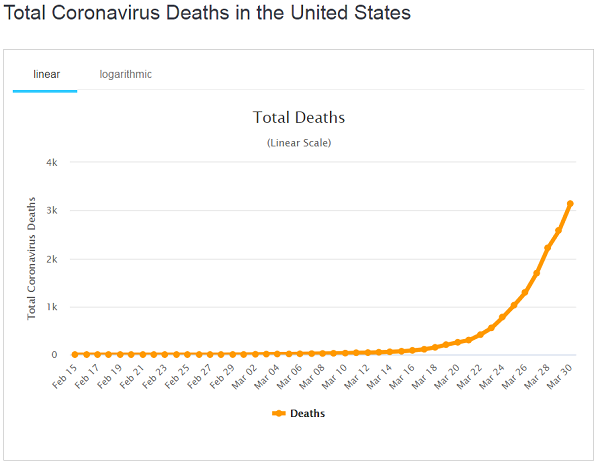Obesity and other serious health conditions are allowing the coronavirus to kill more Americans
04/05/2020 / By Evangelyn Rodriguez

The novel coronavirus has now infected a total of 1,016,534 people worldwide and killed 53,164, according to data from Johns Hopkins University late Thursday. Among the countries with the highest number of reported cases, the U.S. leads by a significant margin with 245,573 confirmed cases. The country’s death toll also topped 6,000 early Friday, soaring dangerously close to Spain and Italy, whose death tolls have reached 10,348 and 13,915, respectively.
According to the Centers for Disease Control and Prevention (CDC), preliminary data from U.S. COVID-19 patients show that underlying health conditions increase the risk of severe COVID-19-related disease. These conditions were identified as diabetes mellitus, lung disease and cardiovascular disease. Data also reveal that 78 percent of coronavirus patients who end up in the ICU have at least one of these health conditions or risk factors.
“These preliminary findings suggest that in the United States, persons with underlying health conditions or other recognized risk factors for severe outcomes from respiratory infections appear to be at a higher risk for severe disease from COVID-19 than are persons without these conditions,” said the CDC in its Morbidity and Mortality Weekly Report.
Is the poor health status of many Americans responsible for the surge of coronavirus cases in America?
The association between chronic diseases and the severity of COVID-19 was first observed among coronavirus patients in China and Italy, two countries that have been hit hard by the pandemic. In addition to the presence of underlying health conditions, researchers also found that old age is another risk factor for severe COVID-19. These findings have been reported by several studies since January.
In an article that appeared in the journal The Lancet on January 24, Chinese researchers analyzed data from 41 hospitalized patients with laboratory-confirmed COVId-19. They noted that 32 percent had underlying diseases, the most common of which were diabetes (20 percent), hypertension (15 percent) and cardiovascular disease (15 percent). Thirty-eight percent of these patients ended up requiring intensive care.
In a more recent study posted on February 27 in the pre-print server medRxiv, researchers observed 109 patients admitted to the Central Hospital of Wuhan between January 2 and February 1. They reported that 48.6 percent of these patients developed a type of respiratory failure known as acute respiratory distress syndrome (ARDS). These patients were older adults with a mean age of 61 years and with one or two underlying health conditions, such as diabetes (20.8 percent), cerebrovascular disease (11.3 percent) and chronic kidney disease (15.1 percent).
In Italy, the latest report released by the Istituto Superiore di Sanita (ISS) — the leading technical-scientific body of the Italian National Health Service — on March 20 described patients who have died due to COVID-19 as older (with a mean age of 78.5 years) and diagnosed with one or more comorbidities before the infection. Of the 481 patients whose data were included in the report, the ISS found that only 1.2 percent had no underlying health conditions; 23.5 percent suffered from one; 26.6 percent suffered from two; and 48.6 percent suffered from three or more.
The most common diseases found in these non-survivors were ischemic heart disease (30.1 percent), stroke (11.2 percent); hypertension (73.8 percent), diabetes (33.9 percent), dementia (11.9 percent), chronic obstructive pulmonary disease (COPD, 13.7 percent), cancer (19.5 percent), chronic liver disease (3.7 percent) and chronic kidney failure (20.2 percent).
With mounting evidence of the association between chronic conditions and severe COVID-19, some experts are beginning to express concerns about the safety and vulnerability of Americans. These stem from the rising rates of diabetes, hypertension, obesity and other serious health problems in the U.S., which have been plaguing the country’s healthcare system for years.
According to former CDC Director Tom Frieden, more than 60 percent of American adults have at least one underlying health condition. And these health conditions have been identified in recent reports as factors that increase not only the risk of coronavirus infection but also the risk of suffering from poor outcomes due to COVID-19.
Rampant obesity in the U.S. is helping the coronavirus epidemic
In a report posted on medRxiv on February 27, researchers evaluated the impact of comorbidities on COVID-19 patients in China. For their nationwide analysis, they included 1,590 confirmed cases from 575 Chinese hospitals and found that comorbidities were present in one-fourth of the patients. These comorbidities, which included hypertension, cardiovascular diseases, cerebrovascular diseases, diabetes, hepatitis B infections, COPD, chronic kidney diseases, malignancy and immunodeficiency, predisposed the patients to poor clinical outcomes. Having one or more comorbidities the researchers noted, gave COVID-19 patients a 79-percent higher chance of being admitted to the ICU, requiring invasive ventilation (or both) or dying due to the coronavirus.
Obesity is a complex disease that increases a person’s risk of other diseases, such as heart disease, diabetes, high blood pressure and certain types of cancer. The main cause of obesity is eating too much calories and not being able to burn them due to the lack of physical activity. This results in the accumulation of visceral fat, which manifests around the waist. According to studies, having too much visceral fat — a condition referred to as abdominal obesity — is linked to insulin resistance, a precursor to Type 2 diabetes; high blood pressure and cholesterol levels, which are driving factors of heart disease; chronic kidney disease and even breast cancer.
The CDC reports that the prevalence of obesity in the U.S. jumped up from 30.5 percent to 42.4 percent between 2000 and 2018. Meanwhile, severe obesity cases also increased by 4.5 percent. With obesity’s link to comorbidities that increase infection risk and a large portion of the population suffering from obesity, health experts fear that the U.S. will continue to see a rise in the number of COVID-19 cases and deaths as many Americans are susceptible to the coronavirus infection.
Sources include:
MedRxiv.org 1 [PDF]
MedRxiv.org 2 [PDF]
Epicentro.ISS.it [PDF]
Tagged Under: America, chronic diseases, comorbidities, coronavirus, coronavirus deaths, covid-19, diabetes, heart disease, heart health, hypertension, infection risk, infectious diseases, obesity, outbreak, pandemic, prevention, research, severe COVID-19, superbugs, viral infections



















